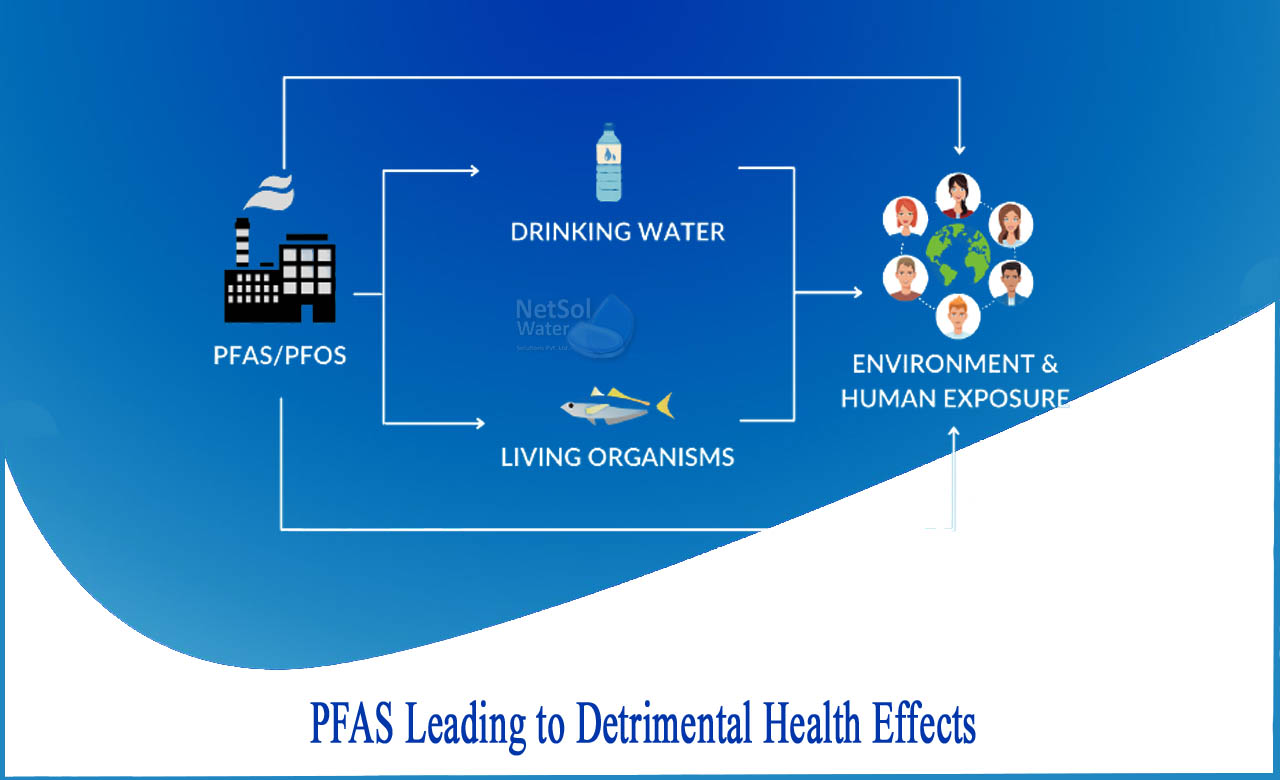What is PFAS and How to Reduce from Water?
PFAS (perfluoroalkyl and polyfluoroalkyl substances) are a class of fire-resistant compounds that also repel oil, stains, grease, and water.
Because these compounds are difficult to modify or break down, they are quite common in the environment and can be found in air, water, and soil. Experts have become increasingly concerned in recent years about the possible implications of high PFAS concentrations on human health.
PFAS compounds, sometimes known as "forever chemicals," are a class of synthetic chemicals that are extraordinarily persistent in the environment and in our bodies.The hallmark elemental bonds of fluorine and carbon, which are extraordinarily strong and make it difficult for these chemicals to dissolve in the environment or in our bodies, are used to identify them all.
Because of its capacity to repel oil and water, PFAS compounds have been widely used in a variety of industries. They've been used in Teflon nonstick cookware, stains and water repellants, paints, cleaning goods, food packaging, and firefighting foams since the 1940s.
While some PFAS are no longer in use, many are constantly being produced in the environment. Almost everyone has been exposed to these chemical substances, either through ambient exposure or through the use of PFAS-containing commercial products. Firefighting foams, stain repellants, nonstick cookware, waterproof clothes and shoes, fast food wrappers, personal care items, and a variety of other consumer goods all contain PFAS. PFAS are found in some drinking water supplies due to their widespread use and the fact that they migrate via groundwater and surface water.
HEALTH EFFECTS OF PFAS
PFAS exposure has been linked to liver damage, thyroid problems, poor fertility, high cholesterol, obesity, hormone suppression, and cancer, according to a growing body of research.These compounds are easily absorbed by air, dust, food, soil, and water. Food packaging and industrial exposure might also expose people to them.
Although having PFAS exposure or PFAS in your body does not guarantee that you will have health problems now or in the future, there is evidence that PFAS exposure can result in negative health effects.
Some human studies involving PFAS exposure have found that particular PFAS can increase the risk of a variety of health problems, including:
· Infants and older children's growth, learning, and conduct are affected.
· Reduce a woman's chances of becoming pregnant.
· Interfere with the production of natural hormones in the body
· Boost your cholesterol levels
· Increase the risk of cancer through affecting the immune system
1-INFERTILITY IN MEN
PFAS are endocrine disruptors that can affect the reproductive system, according to the study. They found that when rats and mice were exposed to PFAS, testosterone levels fell in both in vitro and in rat tests.
2-MISCARRIAGE
Prenatal exposure to seven distinct PFAS variants and the risk of miscarriage were investigated in a study. The researchers looked at PFOS, PFOA, PFNA, PFDA, and PFOSA, which are the most frequent kinds of PFAS identified in drinking water. According to the findings, women who had greater levels of PFAS in their maternal plasma had an 80 percent to 120 percent higher chance of miscarriage than women who had lower levels of PFAS.
3-REDUCED BIRTHWEIGHT
Around the 10th week of pregnancy, a study on expectant moms tested the amounts of eight different forms of PFAS in their blood. Low birth weights, low birth weights for gestational age, and babies considered tiny for gestational age have all been associated to five different forms of PFAS (PFOS, PFOS, PFNA, PFDA, and PFUnDA) (SGA). This happened more often in infant girls than in boys.
4-KIDNEY AND TESTICULAR CANCER ARE AT A HIGHER RISK.
Researchers looked at the levels of eight different types of PFAS chemicals in the blood of 324 patients with Renal Cell Carcinoma (RCC; kidney cancer). They discovered a statistically significant link between serum PFOA concentrations after adjusting for age, demographics, and other characteristics. They also discovered that after controlling for other PFAS kinds, the link between PFOA and Renal Cell Carcinoma maintained. The researchers stated that their findings contribute to the growing body of data that PFOA is a kidney carcinogen, and that their findings could have significant public health consequences for the many people who are exposed to PFAS pollutants around the world.
5-ASTHMA RISK INCREASED
A study of teenagers and the volunteers filled out questionnaires regarding their health issues before having their blood tested for the presence of 18 different PFAS compounds. There was a statistically significant link between the prevalence of asthma and numerous PFAS types, as well as PFOS and nickel allergy.
HOW TO REDUCE PFAS EXPOSURE?
Filter Water: PFAS in water can be reduced using granular activated carbon and reverse osmosis filters. When PFAS levels in water exceed, Netsol Water recommends using a filtration system certified to reduce PFOS and PFOA for drinking, cooking, making baby formula or food, washing fruits and vegetables, brushing teeth, or feeding pets.



